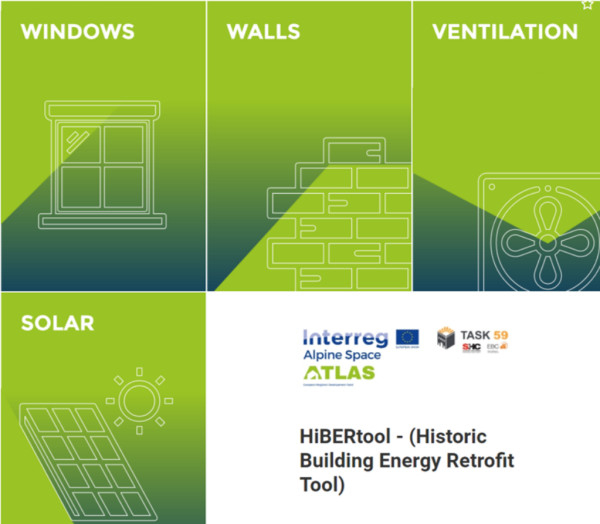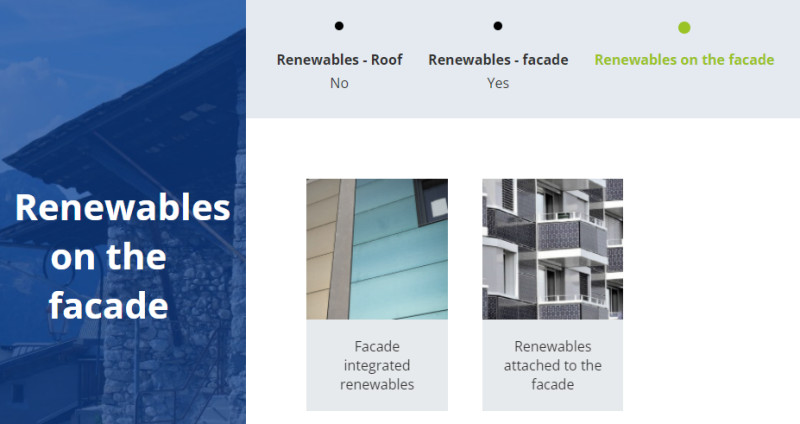Posted: December 5, 2021

A new web application named HiBERtool helps practitioners find the perfect solution for the conservation of historic buildings. The tool explains more than 150 retrofit measures, which range from increasing a building’s energy efficiency to providing solar energy on site. With just a few clicks, users will get solutions tailored specifically to their needs. Page navigation is fairly intuitive, which renders reading a manual entirely unnecessary. All solutions come with a detailed description in the form of a downloadable PDF. You can access the program by going to https://www.tool.hiberatlas.com/en/welcome-1.html
“The HiBERtool should help you find solutions for your specific building needs based on three major criteria: historic conservation value, living comfort as well as energy efficiency, and solar energy use,” Rainer Pfluger, Associate Professor at the University of Innsbruck, Austria, explained at a webinar held on 20 October. All measures offered by the HiBERtool must meet these three criteria.
Tool development was supported by two projects, IEA SHC Task 59 – Renovating Historic Buildings Towards Zero Energy and Interreg Alpine Space ATLAS. A recording of the 20 October webinar, which covered major outcomes of Task 59, can be found online at https://task59.iea-shc.org/event?EventID=7805
“We have grouped the solutions by their defining building component. So, when you launch the tool, you can select whether you want to search for windows, walls, ventilation or solar,” noted Pfluger. He pointed out that a roof section is still missing from the program, but that it might be added at a later stage. The current version includes the following:
- A total of 60 solutions for windows, divided into three categories: box type, single and coupled windows.
- Another 40 for walls, in two categories, solid walls and (half) timber framing. Half the solutions make use of internal insulation, a popular choice for historic buildings.
- Ventilation provides 18 solutions for buildings with either good or bad airtightness.
- Lastly, solar contains 40 PV and solar thermal solutions, mainly building-integrated elements. As a building’s historical value makes installation on the facade impossible sometimes, the tool also offers ideas for ground-mounted solar fields integrated into the landscape.

Once a user has chosen the relevant building component, the tool will ask some key questions to determine what measures could be applicable. In the solar section, they are as follows:
- Can renewables be installed on the roof?
- Is the facade available for renewables?
- Would neighbouring buildings or the ground be available for renewables?
Answering Yes or No will prompt the tool to suggest different options, illustrated by a photo and a description. Pick one of the measures and click Next Step again to be able to download a PDF that describes the solution as well as its pros and cons and gives additional information.
“There is obviously not just one solution for every need. But you have to look closely at the benefits and weak spots of each to make sure that the one you choose is a good fit for your building and its surroundings,” said Pfluger.
The PDF also includes some images of buildings already using this particular solution and/or a link to a retrofitted historic building that uses the suggested solution and is described in the HiBERatlas. The HiBERatlas is an online database detailing 57 of Europe’s retrofitted historic or listed buildings representing a wide variety of building types.
https://www.solarthermalworld.org/news/how-reduce-energy-consumption-historic-buildings
Organisations and projects mentioned in this article: